🐕Are Dobermans Hypoallergenic Dogs? No, Here's Why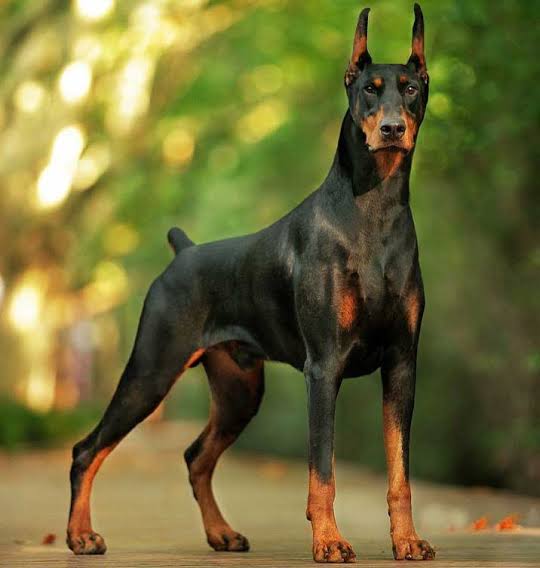
🏞️ A majestic Doberman standing alert in a forest setting, showcasing their natural elegance and protective stance
🐕 Quick Facts About Dobermans
Hypoallergenic:
No
Shedding Level:
Moderate
Grooming Needs:
Low to Moderate
Good for Allergies:
No
⚡ Quick Answer
No, Dobermans are not hypoallergenic dogs.
Despite their short, sleek coat, Dobermans shed year-round and produce significant amounts of dander, making them unsuitable for people with dog allergies. Their shedding pattern and natural oil production can trigger allergic reactions in sensitive individuals.

🏖️ Two energetic Dobermans enjoying a beach run - their active lifestyle means more dander distribution throughout your home
🔬 What Makes a Dog Hypoallergenic?The term "hypoallergenic" refers to dogs that are less likely to cause allergic reactions in sensitive individuals. No dog is 100% hypoallergenic, but certain breeds produce fewer allergens than others. The primary factors that determine a dog's hypoallergenic status include the type of coat they have, how much they shed, and the amount of dander (dead skin cells) they produce. Dog saliva and urine also contain allergens, specifically a protein called Can f 1, which can trigger reactions in allergic people. Truly hypoallergenic breeds typically have curly or wiry coats that trap dander close to the skin rather than releasing it into the air. These breeds also tend to shed minimally, reducing the spread of allergens throughout the home. ⬆️ Back to Menu❌ Why Dobermans Are Not Hypoallergenic🌪️ Shedding PatternDobermans have a continuous shedding cycle throughout the year. While they don't have the dramatic seasonal blowouts of double-coated breeds, they consistently lose hair daily. This constant shedding means allergens are continuously distributed throughout your living space. According to veterinary studies, Dobermans typically shed more during spring and fall transitions, but unlike some breeds, they never have a true "non-shedding" period. Even their short hairs can become airborne easily, carrying dander particles with them. 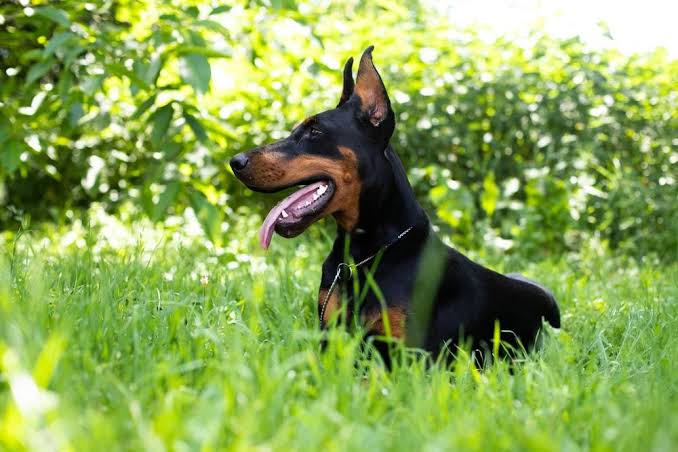
🌿 A relaxed Doberman on grass - even during rest, they continuously shed microscopic dander particles
🧥 Coat Type and CharacteristicsDobermans possess a single-layer, short, smooth coat that lies flat against their body. While this might seem like it would produce fewer allergens, the opposite is actually true. Their hair structure allows dander to escape easily into the environment. The average Doberman coat consists of approximately 600-900 hairs per square inch. Each hair follicle produces natural oils and sheds skin cells, contributing to the overall allergen load in your home. 🔬 Dander ProductionDobermans are moderate to high dander producers. Their active lifestyle and muscular build mean they generate more skin cell turnover than many other breeds. When combined with their natural oils, this creates an ideal environment for allergen production. Research indicates that larger dogs generally produce more dander than smaller ones, and Dobermans, weighing between 60-100 pounds (27-45 kg), fall into this category. Their dander particles are also relatively large and can remain airborne for extended periods. ✂️ Grooming RequirementsWhile Dobermans are relatively low-maintenance in terms of grooming, they still require regular brushing 2-3 times per week to manage shedding. This grooming process, while helpful for coat health, actually releases more allergens into the immediate environment during brushing.
💡 Interesting Fact: Despite their sleek appearance, Dobermans actually have more hair follicles per square inch than many longer-haired breeds, which contributes to their allergen production.
⬆️ Back to Menu
🤧 Dobermans and Allergy SufferersFor individuals with dog allergies, living with a Doberman can present significant challenges. Common symptoms triggered by Doberman allergens include sneezing, runny nose, itchy and watery eyes, skin rashes, and in severe cases, difficulty breathing.
⚠️ Allergy Warning: People with asthma should be particularly cautious around Dobermans, as the combination of dander and their active nature can exacerbate respiratory symptoms.
The severity of reactions varies greatly among individuals. Some people may experience mild discomfort, while others could have severe reactions requiring medical attention. Statistics show that approximately 15-20% of the population has some degree of pet allergy, making breed selection crucial for affected families. 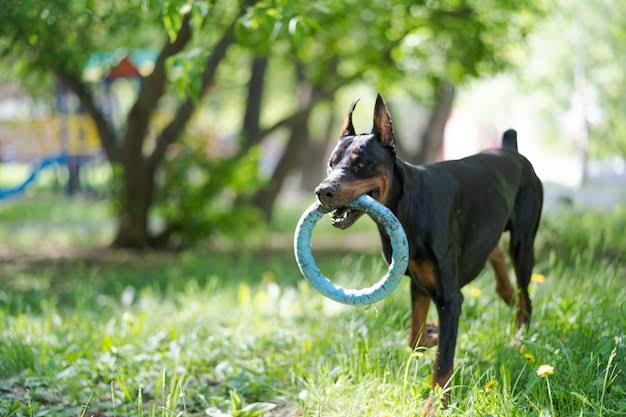
🎾 Playful Doberman with toy - their energetic play spreads allergens throughout the area more quickly
🐶 Alternatives for Allergy Sufferers🎯 Similar Hypoallergenic BreedsIf you're drawn to the Doberman's characteristics but need a hypoallergenic alternative, consider these breeds:
🔍 What to Look ForWhen selecting a hypoallergenic guard dog, prioritize breeds with curly or wiry coats that trap dander rather than releasing it into the air. Look for dogs with minimal shedding patterns and consider the breed's grooming requirements, as regular professional grooming can significantly reduce allergen levels. 🔍 Find Your Perfect Hypoallergenic CompanionReady to find the perfect hypoallergenic dog breed for your lifestyle? Our interactive breed selector considers your specific needs, living situation, and allergy sensitivity to recommend the best matches. Discover which hypoallergenic breeds are perfect for your family in just 2 minutes! 💡 Tips for Doberman Owners with Mild AllergiesIf you already have a Doberman and experience mild allergic reactions, these strategies can help reduce your exposure to allergens:
🪮 Regular Grooming: Brush your Doberman outdoors 3-4 times per week using a high-quality de-shedding tool. This removes loose hair and dander before it spreads throughout your home.
🌪️ Air Purification: Invest in HEPA air purifiers for main living areas and bedrooms. These can remove up to 99.97% of airborne particles, including pet dander.
🧹 Frequent Cleaning: Vacuum carpets and upholstery at least twice weekly using a vacuum with HEPA filtration. Wash your Doberman's bedding in hot water (140°F/60°C) weekly.
🚪 Bedroom Boundaries: Keep your bedroom off-limits to your Doberman. This creates an allergen-free sanctuary where you can recover from daily exposure.

🐕 Adorable Doberman puppy - even young Dobermans produce allergens, though less than adults
📊 Statistical Insight: Studies show that implementing all these measures together can reduce household allergen levels by up to 75%, though this may still not be sufficient for severely allergic individuals.
⬆️ Back to Menu
🧪 Testing Before AdoptingBefore bringing a Doberman into your home, it's crucial to test your compatibility. Spend extended time with Dobermans in various settings - visit breeders, volunteer at rescue organizations, or arrange extended visits with Doberman owners. Consider getting an allergy test from an allergist to determine your specific sensitivities. Some people react more strongly to certain proteins than others, and knowing your triggers can help inform your decision.
⏰ Time Test: Allergic reactions can be delayed. Spend at least 2-3 hours in close contact with a Doberman and monitor your symptoms for up to 24 hours afterward.
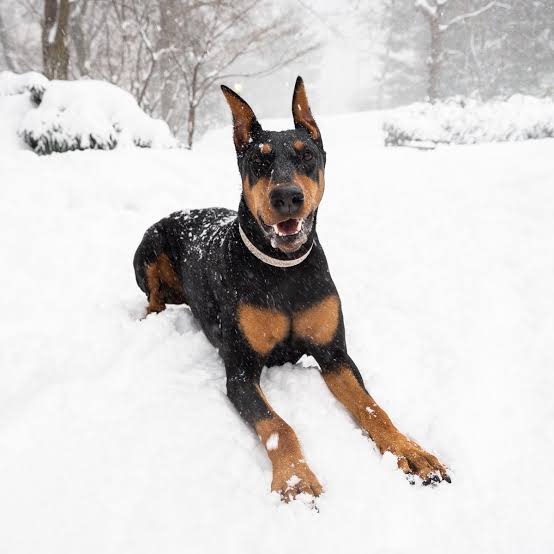
❄️ Doberman enjoying snow - cold weather can actually increase dander production as their skin becomes drier
📝 ConclusionWhile Dobermans are magnificent dogs known for their loyalty, intelligence, and protective instincts, they are definitely not suitable for people with dog allergies. Their continuous shedding, moderate to high dander production, and active lifestyle make them poor choices for allergy sufferers. If you're drawn to the Doberman's characteristics but need a hypoallergenic alternative, consider breeds like Giant Schnauzers or Standard Poodles that offer similar traits with significantly lower allergen production. Remember, no dog is 100% hypoallergenic, but choosing the right breed can make the difference between comfortable cohabitation and constant allergic reactions. 
🍂 A noble Doberman in autumn setting - beautiful but not suitable for allergy sufferers
❓ Frequently Asked Questions
No, there are no low-allergen or hypoallergenic Doberman lines. All Dobermans, regardless of their specific bloodline or individual characteristics, produce significant amounts of allergens through shedding and dander production. The breed's genetic makeup and coat type are consistent across all Doberman varieties.
Dobermans are moderate barkers who typically bark with purpose rather than excessively. They're naturally protective and will bark to alert their family of strangers or unusual activities, but they're not prone to nuisance barking when properly trained and socialized. Their barking tends to be deep and authoritative, making them excellent watchdogs.
Dobermans can adapt to apartment living but require significant daily exercise and mental stimulation. They need at least 2 hours of vigorous exercise daily and benefit from having outdoor access. While their calm indoor demeanor makes them surprisingly good apartment dogs, their size (24-28 inches / 61-71 cm tall) and energy levels mean they're better suited to homes with yards.
Yes, Dobermans are highly trainable and rank among the top 5 most intelligent dog breeds. They're eager to please, learn quickly, and respond well to positive reinforcement training methods. However, they require consistent, firm leadership and early socialization. Their intelligence means they can become bored easily, so training sessions should be varied and engaging.
Dobermans should not be left alone for more than 4-6 hours regularly. They're extremely people-oriented and can develop separation anxiety, leading to destructive behaviors. If you work full-time, consider doggy daycare, dog walkers, or having a family member check on them. They thrive on human companionship and don't do well with prolonged isolation.
Mature Dobermans (2+ years) are generally calm indoors but have high energy requirements. They're often described as having an "on/off switch" - energetic and playful during exercise time, but calm and relaxed in the home. Young Dobermans (under 2 years) tend to be more energetic and may take longer to settle. Proper exercise and mental stimulation are key to maintaining their calm demeanor.
Dobermans are moderate shedders compared to breeds like German Shepherds or Golden Retrievers, but they shed more than breeds like Poodles or Bichon Frises. They shed consistently year-round with slight increases during seasonal changes. Despite their short coat, their shedding is enough to trigger allergic reactions in sensitive individuals.
Dobermans are prone to several health conditions including dilated cardiomyopathy (DCM), von Willebrand's disease, hip dysplasia, and bloat. They also have a higher risk of certain cancers. Regular health screenings, proper diet, and working with reputable breeders who health test their breeding stock are essential. Their average lifespan is 10-13 years.
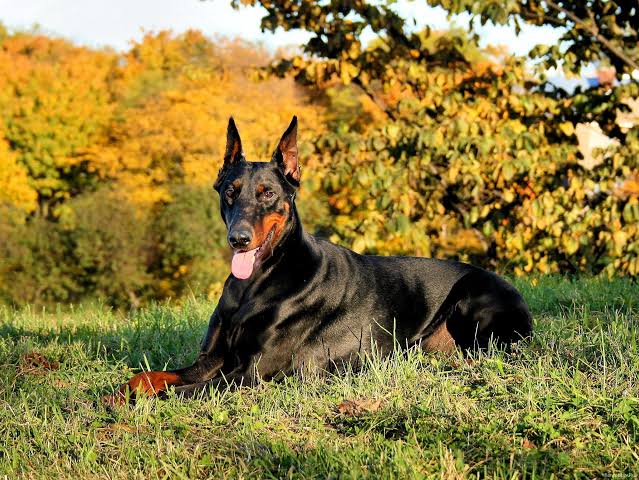
🌾 A peaceful Doberman resting in an autumn field - their calm moments don't reduce allergen production
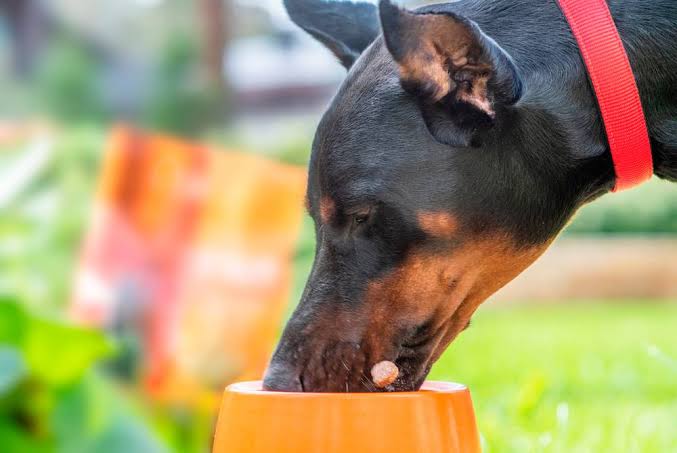
🍽️ Close-up of Doberman eating - saliva also contains allergens that can affect sensitive individuals

🌸 Doberman enjoying spring under apple blossoms - seasonal changes can increase their shedding
🔬 Final Scientific Note: Research by the American College of Allergy, Asthma & Immunology shows that Dobermans produce approximately 15-20 micrograms of Can f 1 protein per gram of hair, which is considered a moderate to high allergen level compared to truly hypoallergenic breeds that produce less than 5 micrograms per gram.
⬆️ Back to Menu
🐕 Explore More Dog BreedsLooking for more information about hypoallergenic and non-hypoallergenic dog breeds? Check out our comprehensive breed guides to find the perfect companion for your family! 📚 Return to Top | |||||||||||||||||||||
|
| |||||||||||||||||||||
| Переглядів: 51 | | | |||||||||||||||||||||
| Total comments: 0 | |
